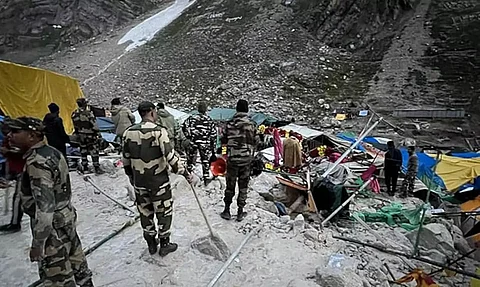
- Home
- Live Blog
- Breaking News
- Top Headlines
- Cities
- NE News
- Sentinel Media
- Sports
- Education
- Jobs

NEW DELHI: Cloudbursts have become increasingly common in the mountainous regions of India, highlighting the increasing frequency of extreme weather events due to the acute impact of climate change.
On Friday, a cloudburst in the lower Amarnath cave area left 15 people killed and many injured. Heavy boulders and gushing water hit the base camp at Baltal, washing away three langars and 25 tents pitched by pilgrims undertaking the perilous annual yatra to the famed holy shrine.
Cloudburst as a major extreme weather event first made headlines in August 2010 during flash floods in parts of Ladakh. Cloudburst and heavy overnight rains triggered floods that left over 250 dead and close to 9,000 people affected.
A cloudburst can be described as very heavy rainfall that suddenly occurs for a brief period over a small area. According to a report by National Institute of Disaster Management on the 2013 Uttarakhand flash flood, cloudbursts can be accompanied by hail and thunderstorm. While cloudbursts can technically occur anywhere, they are most commonly witnessed in mountainous and desert regions.
India Meteorological Department director-general Mrutunjay Mohapatra said cloudburst is a small-scale event and takes place over hilly areas in the Himalayas or in the Western Ghats. He said when warm monsoon winds interact with cold winds it leads for formation of massive clouds, which is also due to the topography or orographic factors. If 10 cm rainfall is received at a station in one hour, the rain event is termed as cloudburst.
A cloudburst can have a devastating impact triggering flash floods. These floods can cause uprooting of trees and movement of boulders and other debris. On its way down, the water gathers speed and force and can sweep aside structures in the way. Cloudbursts can also cause landslides in hilly areas while in the plains, it can lead to rapid flooding.
Also Watch: